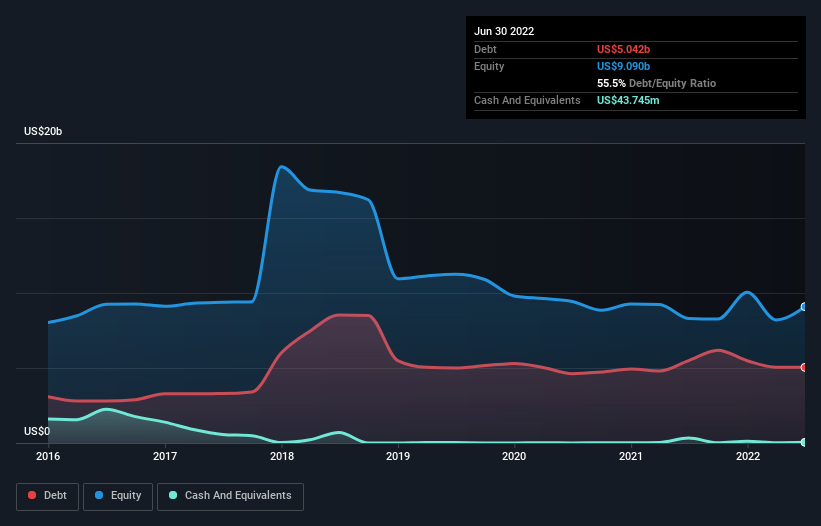
Warren Buffett famously said, ‘Volatility is far from synonymous with risk.’ When we think about how risky a company is, we always like to look at its use of debt, since debt overload can lead to ruin. We can see that EQT Corporation (NYSE:EQT) does use debt in its business. But should shareholders be worried about its use of debt?
When Is Debt Dangerous?
Debt is a tool to help businesses grow, but if a business is incapable of paying off its lenders, then it exists at their mercy. Ultimately, if the company can’t fulfill its legal obligations to repay debt, shareholders could walk away with nothing. While that is not too common, we often do see indebted companies permanently diluting shareholders because lenders force them to raise capital at a distressed price. Having said that, the most common situation is where a company manages its debt reasonably well – and to its own advantage. When we think about a company’s use of debt, we first look at cash and debt together.
How Much Debt Does EQT Carry?
You can click the graphic below for the historical numbers, but it shows that EQT had US$5.04b of debt in June 2022, down from US$5.50b, one year before. Net debt is about the same, since the it doesn’t have much cash.

A Look At EQT’s Liabilities
We can see from the most recent balance sheet that EQT had liabilities of US$7.19b falling due within a year, and liabilities of US$6.34b due beyond that. Offsetting this, it had US$43.7m in cash and US$2.06b in receivables that were due within 12 months. So it has liabilities totalling US$11.4b more than its cash and near-term receivables, combined.
This is a mountain of leverage even relative to its gargantuan market capitalization of US$16.6b. Should its lenders demand that it shore up the balance sheet, shareholders would likely face severe dilution. When analysing debt levels, the balance sheet is the obvious place to start. But ultimately the future profitability of the business will decide if EQT can strengthen its balance sheet over time. So if you’re focused on the future you can check out this free report showing analyst profit forecasts.
In the last year EQT wasn’t profitable at an EBIT level, but managed to grow its revenue by 188%, to US$10b. So there’s no doubt that shareholders are cheering for growth
Caveat Emptor
Despite the top line growth, EQT still had an earnings before interest and tax (EBIT) loss over the last year. To be specific the EBIT loss came in at US$272m. When we look at that and recall the liabilities on its balance sheet, relative to cash, it seems unwise to us for the company to have any debt. Quite frankly we think the balance sheet is far from match-fit, although it could be improved with time. For example, we would not want to see a repeat of last year’s loss of US$810m. So in short it’s a really risky stock. For riskier companies like EQT I always like to keep an eye on whether insiders are buying or selling. So click here if you want to find out for yourself.
When all is said and done, sometimes its easier to focus on companies that don’t even need debt. Readers can access a list of growth stocks with zero net debt 100% free, right now.
Have feedback on this article? Concerned about the content? Get in touch with us directly. Alternatively, email editorial-team (at) simplywallst.com.
This article by Simply Wall St is general in nature. We provide commentary based on historical data and analyst forecasts only using an unbiased methodology and our articles are not intended to be financial advice. It does not constitute a recommendation to buy or sell any stock, and does not take account of your objectives, or your financial situation. We aim to bring you long-term focused analysis driven by fundamental data. Note that our analysis may not factor in the latest price-sensitive company announcements or qualitative material. Simply Wall St has no position in any stocks mentioned.
The views and opinions expressed herein are the views and opinions of the author and do not necessarily reflect those of Nasdaq, Inc.
Source link
